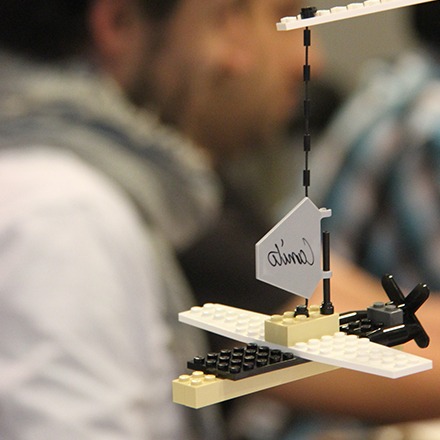The Rules of Genius #14: Use a dynamic process for reactive elements
Complex problems are dynamic. They don’t hold still while you work on them. The traditional approach is to address a complex problem as if it were a simple problem, breaking it into discrete steps that can be executed one at a time. Too often the result was 1) a solution that didn’t address the real problem, 2) a solution that caused new problems, or 3) a solution that was largely ineffective. Just because you’ve ticked the boxes doesn’t mean you’ve solved the problem.
Complex projects with interactive elements—parts that change dynamically with every change to the whole—require an all-at-once process instead of a step-by-step process. The way this unfolds depends on what the project is.
Let’s take the case of building a brand for a new product. A brand is a customer’s perception about product, service, or company. Therefore the task of brand-building is to give customers experiences that help them perceive your product in favorable way. The proof of success is not the number of boxes you’ve ticked, but the change in the way customers think about the category in which you’re competing. You want customers to rank your brand as number one or two in your category, not as five or six.
The experiences you design for customers might include the product itself, a series of messages about the product, and a certain way the product is packaged, sold, or delivered. You might build in features that delight customers enough to tell their friends or write positive reviews online. You might also train front-line employees to represent the brand in a way that makes customers happy. You might design a program to encourage loyalty, rather than risk losing them to competitors. Beyond all this, you might want to imbue these elements with freshness and imagination, so your brand becomes a hard act to follow.
A program with this level of complexity has more in common with writing music than baking a cake. If you try to address these elements one at a time, you’re likely to end up with a “Frankenbrand,” a collage of experiences that customers perceive as mismatched and inorganic.
A better process for designing a complex program is to address all the elements at once. Let the various parts influence each other dynamically as they emerge from your mind or your pencil or your team’s whiteboard markers. Let them crash into each other and create new elements. Keep them in a liquid state long enough to see them morph and mutate into surprising new possibilities. Stir them until they blend into seamless whole, one that’s more than the sum of its parts.
When employed by teams, this free-for-all process is known as “swarming.” It’s fast-paced, exhilarating, and well-suited to small teams of creative professionals. It’s also disconcertingly chaotic. Swarming is not for the faint of heart.
Next week: Work to an appropriate structure.
Every design has it’s own order. It’s the job of the genius to find it.
The Rules of Genius is now a book with a bonus section called “How can I matter?” that includes 10 essential rules. Buy here.


